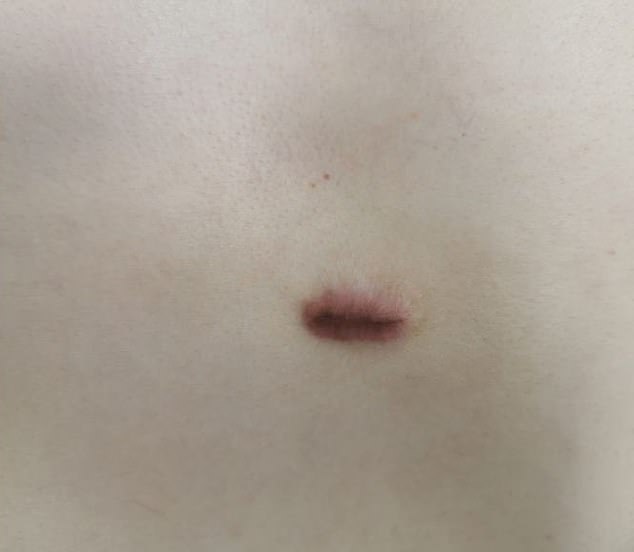Doctors refused to remove man’s giant birthmark – so he burned it with acid, risking fatal cancer
Doctors have warned of the dangers of removing moles yourself after a man in his 20s used a DIY acid treatment that left him at risk of “serious injury”.
Irish doctors who reported the case also warned that such treatments could potentially cause fatal skin cancer.
In a case report published in the BMJAccording to doctors at Beaumont Hospital in Dublin, a man in his 20s was referred to them requesting removal of a mole on his chest, which was almost an inch long.
The man, originally from Eastern Europe, told doctors he wanted to have the mole removed for aesthetic reasons. He had tried to do it himself eight months earlier with an acid solution he had bought privately, but the mole had returned.
Like the NHS, the Irish health system does not routinely remove moles because people are unhappy about them. It does so if the mole is suspected of being cancerous.
In a case report published in the BMJ, doctors at Beaumont Hospital in Dublin reported that a man in his 20s was referred to them requesting removal of a mole measuring almost an inch long on his chest.

The man, originally from Eastern Europe, told doctors that he wanted to have the mole removed for aesthetic reasons and that he had tried to do so himself eight months earlier using an acid solution he had purchased privately, but the mole had returned.
The doctors examined the mole and found some potentially worrying features, such as the mole coming back despite having been previously damaged, so they decided to remove the mole.
The case report noted a number of concerns about such DIY mole removal treatments. In addition to acid, these treatments also use “pens” that generate high or low temperatures to freeze or burn the mole.
In addition to the risk of serious injury from these methods, the doctors said such treatments may also increase the risk of skin cancer.
“Destructive treatments and the associated chronic thermal and chemical scarring carry an increased risk of malignant transformation, most commonly squamous cell carcinoma and less commonly melanoma,” the researchers said.
They also noted that DIY removal by untrained professionals risks leaving behind portions of a potentially dangerous mole, leading to delays in skin cancer diagnosis and necessary treatments.
Doctors pointed to previous research showing that only one in 25 mole removal products advertised on websites like Instagram are actually recommended by dermatologists.
MailOnline also discovered that products such as acid for moles and thermal pens for ‘spots’ can be purchased online in the UK for as little as £20.
The doctors concluded their report by stating that there is a need to educate both the public and the aesthetic sector, which often performs such treatments, about the dangers of using these products.
People are advised to monitor their moles and note any new moles and changes in size, shape or color.
Moles are usually harmless and have multiple colors, irregular borders, bleed, itch, or a crusty or thickened texture. This can be a sign of melanoma, a form of skin cancer.
People who notice any of these changes are advised to contact their doctor.
Around 17,500 Britons are diagnosed with melanoma each year, that’s around 50 a day.
Melanoma is the fifth most common cancer in the UK, accounting for one in twenty diagnoses.
Melanoma is one of the cancers with the highest survival rate: 87 percent of patients are still alive 10 years after diagnosis.
It is thought that about 86 percent of skin cancers could have been prevented if people had taken more steps to prevent sun damage to their skin, the main cause of the disease.
Britons are advised to avoid sunlight during the hottest part of the day in summer and when staying in hot countries. To reduce the risk, they should wear a hat and sunscreen.
Data from the charity Cancer Research UK suggests that one in 35 men and one in 41 women in the UK will develop melanoma at some point in their lives.
